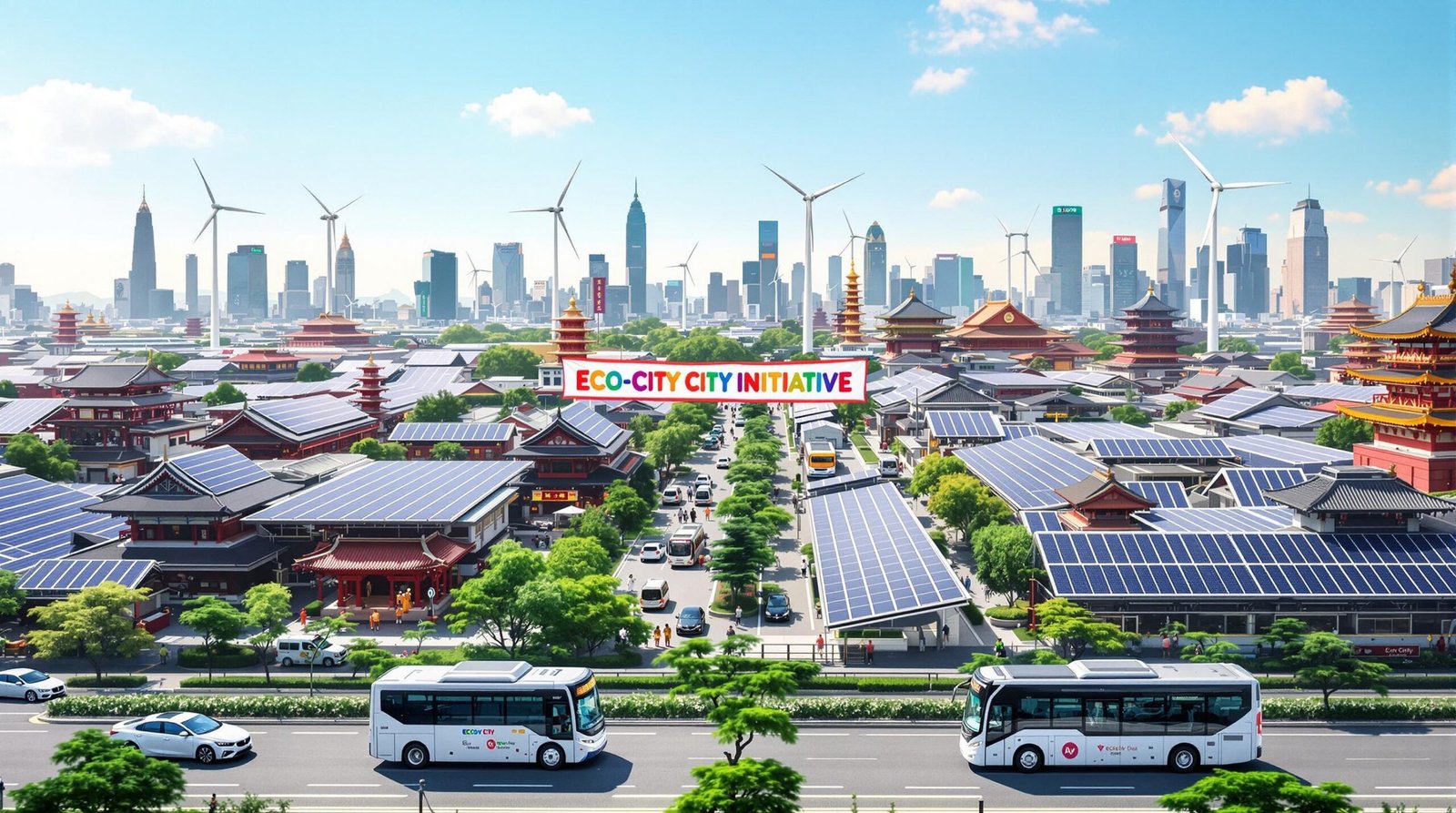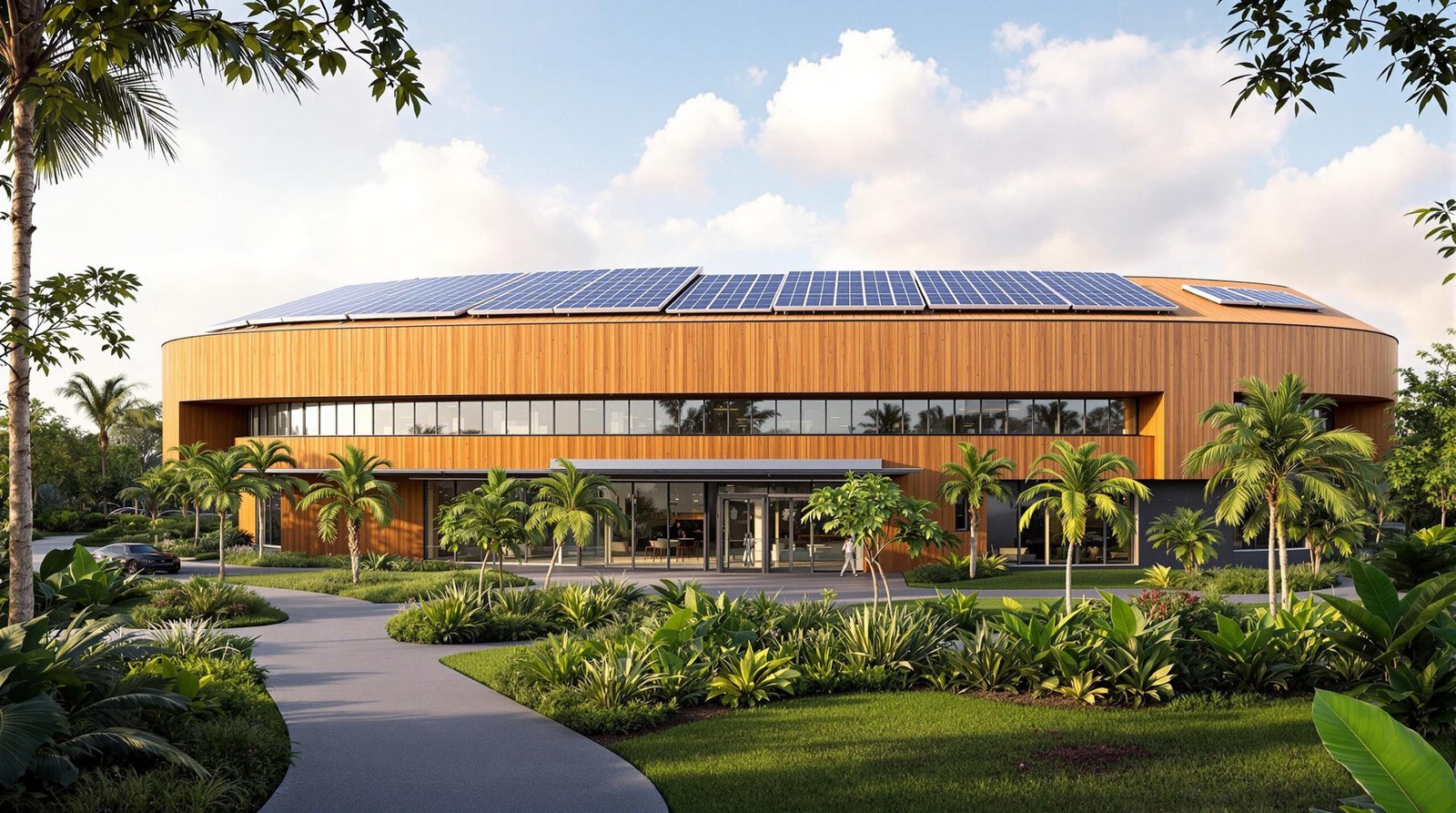The rise of green technology embodies a transformative approach towards sustainable development, especially in Asia. The growing urgency to address climate change challenges has placed pressure on various sectors to adopt more environmentally friendly practices. This transition is not merely beneficial; it is critical for the region’s future sustainability and resilience against environmental degradation.
The rapid industrialization across Asian countries has profoundly impacted ecological systems, resulting in increased emissions and a significant carbon footprint. As nations strive to fulfill their economic potentials while adhering to global climate accords, the adoption of green technologies emerges as a potential remedy.
Green technology encapsulates innovations and practices that aim to reduce environmental impacts, enhance energy efficiency, and promote sustainable use of resources. By seamlessly integrating eco-conscious solutions, countries can balance industrial growth with ecological preservation.
This section explores various components and trends—ranging from energy production to waste management—that highlight the profound importance of green technology in Asia. Embracing these innovations can mitigate environmental damage while positioning countries favorably amidst global economic shifts.
The Role of Renewable Energy Solutions
Renewable energy solutions are at the forefront of the green technology revolution in Asia. Countries like China and Japan are heavily investing in renewable energy to reduce reliance on fossil fuels. In 2022 alone, China channeled an astonishing $546 billion into green energy initiatives. Such funding is pivotal, positioning nations as leaders in sustainable development.
The landscape of renewable energy is vast, encompassing solar, wind, hydropower, and other renewable sources. In particular, solar energy has witnessed dramatic advancements, becoming affordable and efficient enough to replace conventional energy sources. Technological innovations in energy storage and solutions aimed at mitigating intermittency play crucial roles in making renewable sources the primary energy basis for the future.
Here’s a list delineating key renewable energy sources spearheaded by Asian countries:
- Solar Energy: Rapidly becoming the most popular energy source; countries are investing in large-scale solar farms.
- Wind Power: Regions with high wind potential, primarily coastal areas, are harnessing wind energy to drive sustainability.
- Hydropower: Established dams generating consistent hydropower while minimizing carbon emissions.
- Biomass Energy: Utilizing organic materials while reducing waste; promising in agricultural-based economies.
- Geothermal Energy: Tapping into the earth’s heat for a sustainable energy supply, particularly prominent in volcanic regions like Indonesia.
Industry Leaders and Green Innovations
Prominent companies are championing green technology, illustrating the competitive edge of sustainable practices. Corporations like Alphabet Inc. have introduced features such as eco-routing in Google Maps, leading to significant reductions in greenhouse gas emissions. Such initiatives not only exemplify corporate responsibility but also showcase effective integration of technology and sustainability.
Another remarkable player is Apple Inc., which has committed to significant sustainability goals. By 2030, the company aims to achieve carbon-neutral operations, encouraging its suppliers to adopt clean energy practices. Apple’s Power for Impact program facilitates global access to clean energy solutions, reflecting a comprehensive approach towards sustainability.
Table 1 below highlights some key innovations and practices adopted by industry leaders:
| Company | Innovation | Impact |
|---|---|---|
| Alphabet Inc. | Eco-routing in Google Maps | Reduction of over 500,000 metric tons of greenhouse gas emissions |
| Apple Inc. | Power for Impact Program | Access to clean energy for worldwide communities |
| Tesla Inc. | Electric Vehicles | Significant reduction in reliance on fossil fuels |

Healthcare’s Transition to Greener Practices
The healthcare sector plays a substantial role in energy consumption and carbon emissions. Efforts are underway in countries like the Philippines to integrate renewable energy into healthcare facilities, enhancing sustainability while reducing costs. The government’s Green Energy Option Programme (GEOP) paves the way for hospitals to transition towards cleaner energy sources, ensuring a dual benefit of environmental and financial efficiency.
As hospitals become significant energy consumers with extensive carbon footprints, the transition is paramount. The Department of Health actively promotes initiatives, underscoring the potential for substantial savings combined with enhanced resilience against environmental changes.
Healthcare professionals recognize the pressing need for sustainability. The integration of solar and wind power not only reduces reliance on traditional energy sources but also ensures uninterrupted power supply during critical phases, including emergencies.
Engr. Jephraim Manansala emphasized the growing accessibility and cost-effectiveness of renewable solutions, stating that “renewable energy has reduced the settlement price of electricity.” This signifies a cumulative benefit, allowing healthcare facilities to procure renewable energy without substantial initial investments in infrastructure.
Financial Implications of Green Energy in Healthcare
Investing in green technologies, specifically in the healthcare sector, presents myriad financial benefits. The reduction in utility costs as a direct outcome of energy efficiency translates to enhanced savings over time. This financial advantage reinforces the rationale behind the transition to renewable energy, making it both a responsible and economically viable choice.
Additionally, as awareness of climate issues rises, stakeholders emphasize the prominence of sustainable practices in improving corporate image. By adopting green technologies, hospitals and healthcare facilities can not only reduce their emissions but also enhance their reputation in the community as responsible entities.
Below is a brief overview of the financial aspect of transitioning to renewable energy in the healthcare sector:
- Lower Operating Costs: Reduction in energy bills can lead to significant cost savings annually.
- Government Incentives: Many governments provide grants and tax incentives for facilities adopting renewable sources.
- Increased Resilience: Facilities employing renewable energy are less vulnerable to energy price fluctuations.

The Evolution of Electric Mobility in Asia
The push towards eco-friendly transportation practices is compelling, particularly with the rise of electric vehicles (EVs) across Asia. Nations including Japan, China, and India are leading the charge by accelerating EV policies and establishing extensive charging infrastructure.
Enhanced investment in EV technology is driving innovation while addressing pollution challenges in urban areas. The increasing affordability of battery technologies positions electric vehicles as a viable alternative to conventional vehicles, thus facilitating a more sustainable transport landscape.
Government initiatives aimed at reducing emissions are reaping rewards. As EV adoption rates climb, the impact on air quality and urban landscapes becomes evident, fostering healthier and more vibrant communities.
Several critical factors influence the expansion of electric mobility in the Asia market:
- Government Policies: Tax incentives and subsidies propel EV purchases and infrastructure development.
- Public Awareness: Growing consumer understanding of environmental benefits boosts demand for electric vehicles.
- Technological Advancements: Improvements in battery technology enhance vehicle range and overall efficiency.
Challenges to Electric Vehicle Adoption
Despite the promising outlook, the transition to electric mobility faces obstacles that must be addressed. Infrastructure development is crucial; without adequate charging stations and maintenance shops, the growth of the EV market could stall.
Moreover, the initial cost of electric vehicles remains a significant barrier for many consumers. Financial incentives need to be ongoing to ensure the affordability of entry-level models. Addressing these factors will be crucial to spurring wider acceptance and adoption.
| Challenges | Potential Solutions |
|---|---|
| Lack of Charging Infrastructure | Public-private partnerships to develop charging stations |
| High Initial Costs | Continued subsidies and incentives for consumers |
| Public Awareness | Educational campaigns highlighting the benefits of EVs |
The Compact Future: Smart Cities and Green Technology Integration
As urbanization intensifies across Asia, the development of smart cities is emerging as a solution to sustainability challenges. The integration of green technology into city planning reflects a holistic approach to combating climate change while enhancing livability and operational efficiency.
Smart cities encapsulate the use of digital technologies to manage assets, resources, and services more efficiently. By incorporating green technologies such as renewable energy and smart grids, these cities can drastically reduce their ecological footprints.
Municipalities across Asia are pursuing projects that tie economic growth with sustainable practices. Japan’s notable developments in urban gardens show how cities can reclaim green spaces while improving air quality and residents’ well-being.
Key components that characterize smart city developments include:
- Smart Grids: Integrating renewable energy sources while enhancing energy distribution efficiency.
- Public Transportation: Promoting electric busses and rail systems to reduce emissions.
- Waste Management: Utilizing smart bins and recycling technologies to minimize waste.
- Green Infrastructure: Developing eco-friendly buildings and urban parks to enhance biodiversity.
Building Resilient Communities: The Path Ahead
Building resilient communities within smart cities involves an array of collaborative efforts that involve government, businesses, and citizens alike. Sustainable technologies hold the key to addressing pressing challenges, yet collective engagement is paramount.
To optimize the impact, cities need to emphasize inclusivity, ensuring every resident can benefit from green technologies. Through initiatives that foster participation in sustainability, communities will foster trust and shared responsibility towards environmental stewardship.
Advancing smart cities requires innovation, diligence, and vision. By prioritizing eco-friendly practices and fostering collaborative ecosystems, Asia can lead global efforts in sustainable urbanization.
The Future of Green Technology in Asia
The trajectory towards integrating green technologies in Asia paints a promising paradigm for future sustainability. As countries recognize the intrinsic links between economic growth and ecological health, the urgency to adopt eco-friendly practices is more pronounced than ever.
Collaborative ventures among corporations, governments, and communities will play pivotal roles in ensuring the trajectory remains positive. Continuous investment in innovation and technological advancements will drive down costs of renewable technologies and promote their widespread adoption.
Emphasizing regions like Southeast Asia, stakeholders must leverage the numerous climate tech startups burgeoning across nations. These startups are committed to delivering cutting-edge solutions that align with sustainable goals. Innovations coming from such companies exemplify the potential for new ideas to contribute substantially to regional and global sustainability efforts.
Ultimately, the future of green technology in Asia will hinge upon collaboration, adaptability, and foresight. As communities address environmental challenges with purpose, the possibilities for a sustainable future become not just a hopeful vision, but a tangible reality.
With initiatives like these, Asian countries are setting forth a commendable path towards achieving sustainability, characterized by innovation, responsibility, and a collective vision for a greener tomorrow. The commitment to these ideals signals a hopeful transition, promising a better future for generations to come.
As these heroes of sustainable development continue to evolve, it is essential to remain engaged, informed, and actively participating in the ongoing dialogue surrounding green technology’s role in our world.

